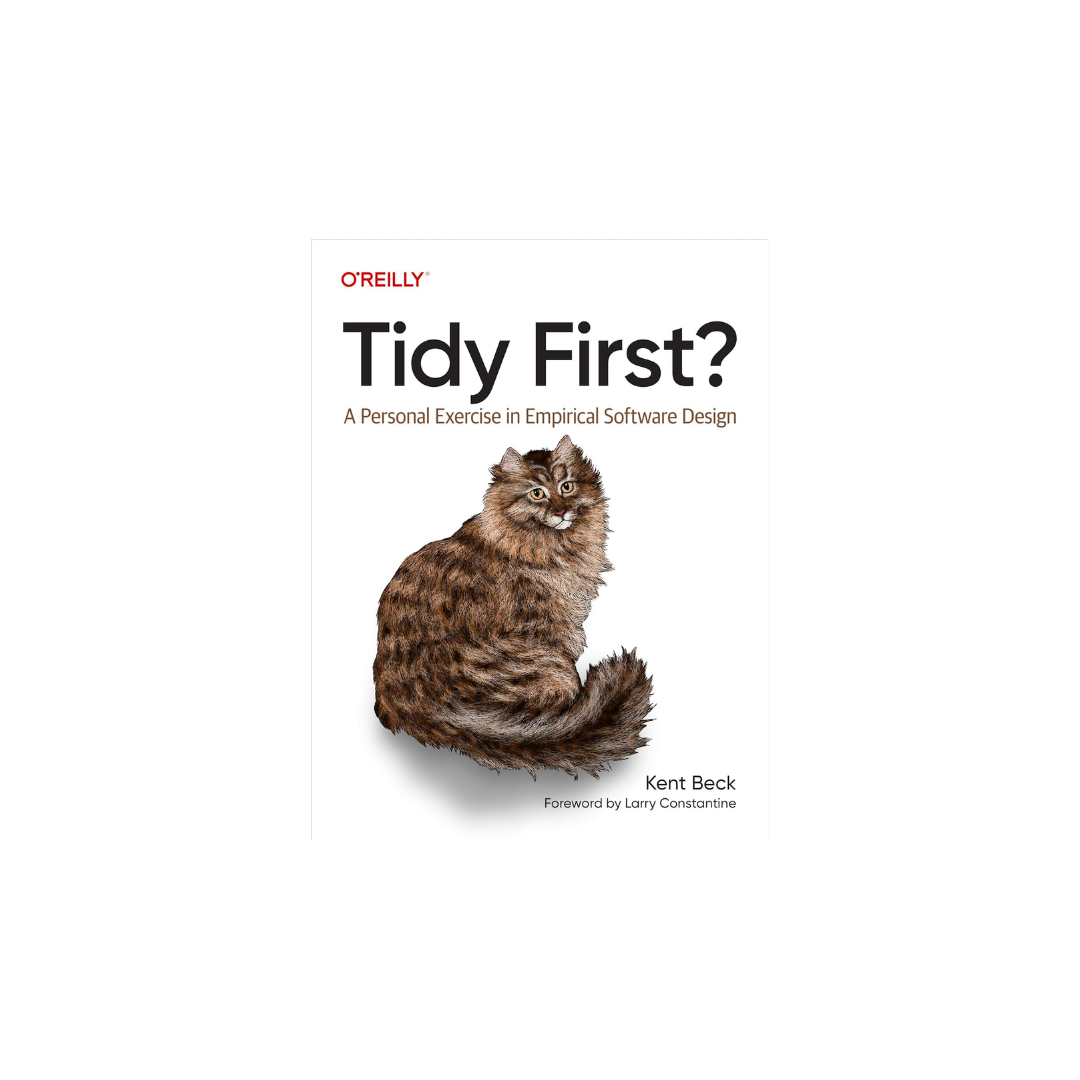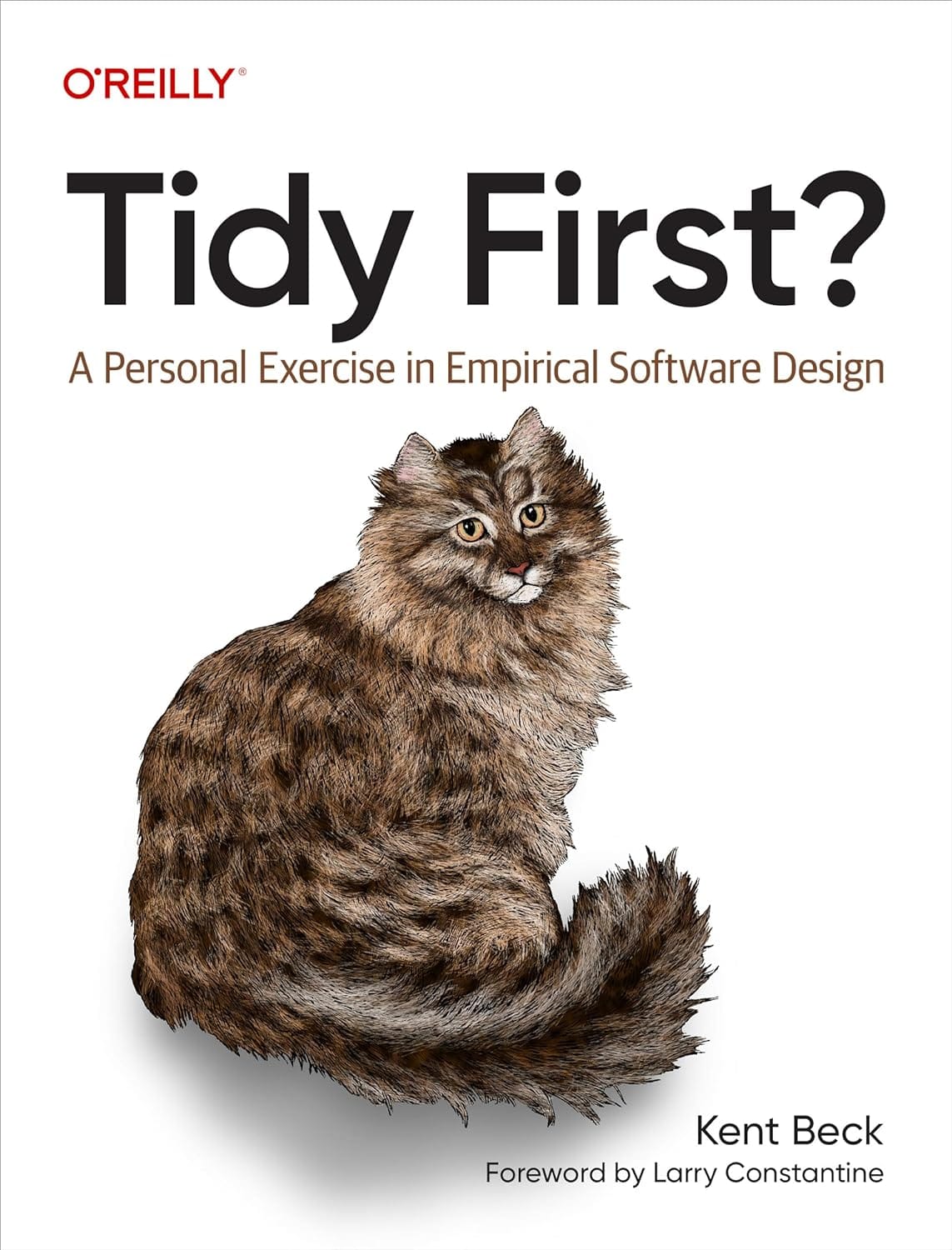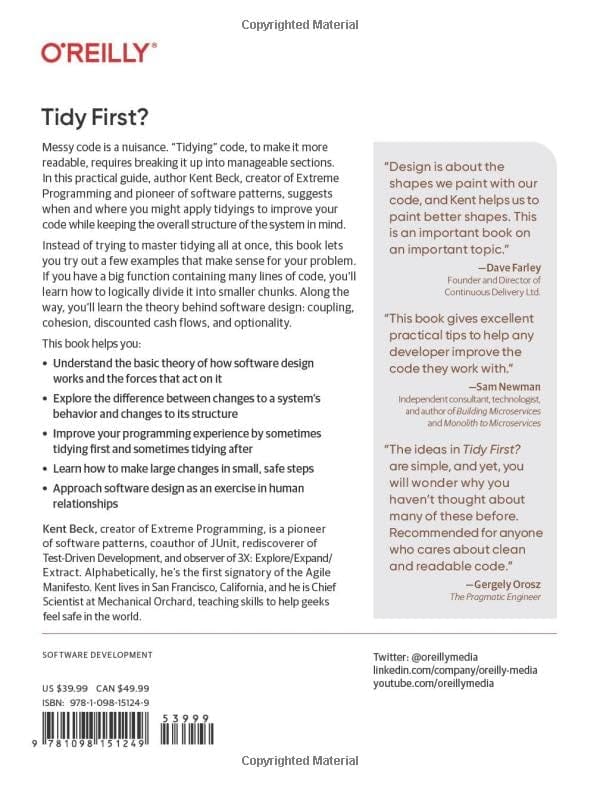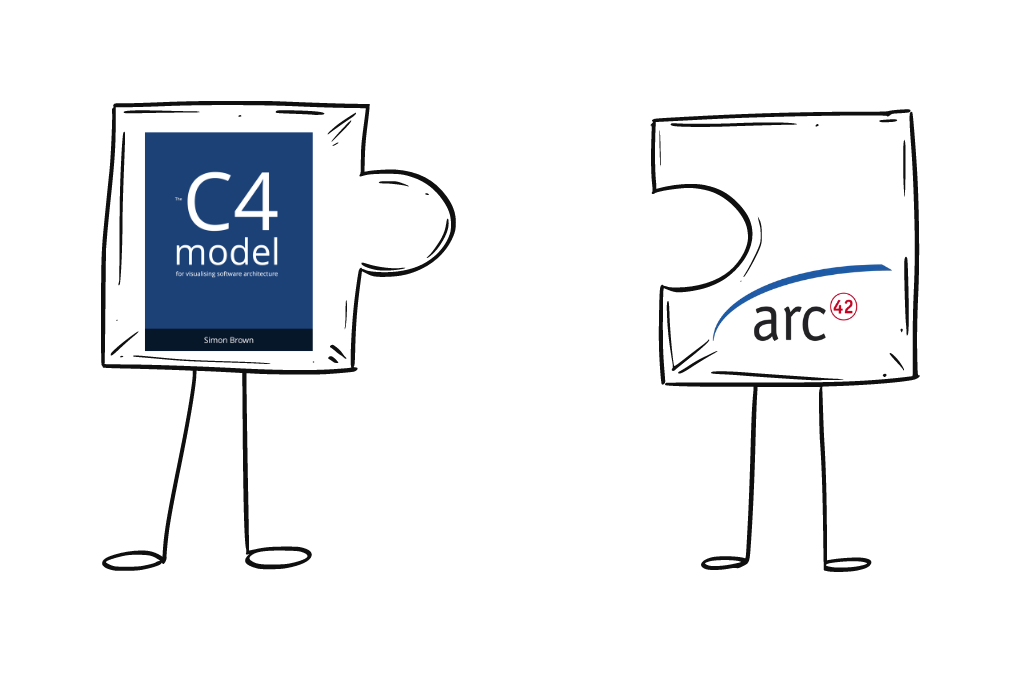Tidy First? A Summary of Kent Beck's Book on Empirical Software Design
This post contains my book summary of Kent Beck's Insights on Empirical Software Design.

The book
The book Tidy First? A Personal Exercise in Empirical Software Design by Kent Beck provides a practical guide to improving code readability by breaking it down into manageable sections.
The book suggests applying tidying techniques gradually, tailoring them to specific code issues.


Key concepts like coupling, cohesion, discounted cash flows, and optionality are introduced to enhance software design understanding.
The book delves into the distinction between changes to behavior and structural alterations.
It emphasizes the value of incremental improvements and human-centered software design.
The author
Kent Beck is a highly influential software developer and thought leader. He is best known for his contributions to Extreme Programming, software patterns, JUnit, Test-Driven Development, and the Agile Manifesto.
Currently, he serves as the Chief Scientist at Mechanical Orchard, where he focuses on empowering geeks to feel safe in the world through teaching and mentorship.
Table Of Contents
- Part I. Tidyings
- 1. Guard Clauses
- 2. Dead Code
- 3. Normalize Symmetries
- 4. New Interface, Old Implementation
- 5. Reading Order
- 6. Cohesion Order
- 7. Move Declaration And Initialization Together
- 8. Explaining Variables
- 9. Explaining Constants
- 10. Explicit Parameters
- 11. Chunk Statements
- 12. Extract Helper
- 13. One Pile
- 14. Explaining Comments
- 15. Delete Redundant Comments
- Part II. Managing
- Part III. Theory
- 22. Beneficially Relating Elements
- 23. Structure and Behavior
- 24. Economics: Time Value and Optionality
- 25. A Dollar Today > A Dollar Tomorrow
- 26. Options
- 27. Options Versus Cash Flows
- 28. Reversible Structure Changes
- 29. Coupling
- 30. Constantine's Equivalence
- 31. Coupling Versus Decoupling
- 32. Cohesion
- 33. Conclusion
Read in 2 minutes
This book explores the concept of tidying, which involves making small, incremental changes to code to improve its readability and maintainability. It argues that tidying is not about perfectionism, but rather about making code easier for programmers and future maintainers to understand and work with.
The book defines tidying as "making small, incremental changes to the structure and organization of code to improve its readability, maintainability, and overall quality."
It provides a comprehensive overview of various tidying techniques, including:


